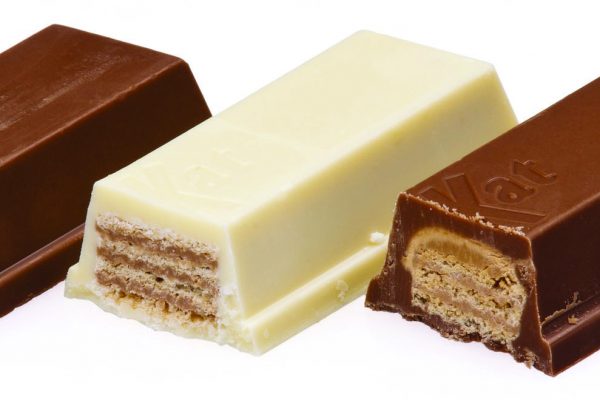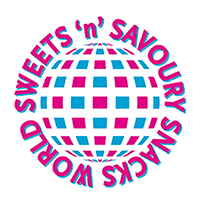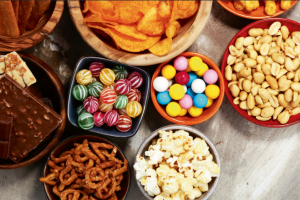Identity crisis

Partner Geoff Steward and solicitor Richard Byam-Cook from London law firm Macfarlanes consider Nestlé’s quest to protect the shape of the KitKat.
In 2010, Nestlé applied to register the three dimensional, four fingered shape of its KitKat bar as a trademark. Although the Intellectual Property Office (IPO) initially accepted Nestlé’s application, it was subsequently opposed by Cadbury and has been the subject of litigation ever since. A recent decision of the Court of Justice of the European Union (CJEU) has shed light on the possible outcome of this litigation. This article analyses the history of the case, how it might be decided, the policy reasons underlying the trademark regime and the implications of this decision for other confectionery manufacturers.
Background
A trademark is any ‘sign’ that is capable of being used by a business to differentiate its goods or services from those of a competitor. Although trademarks are most commonly used to protect product names, slogans and logos, it is also possible to register a variety of other ‘signs’ as trademarks. Smells, colours, sounds and three dimensional shapes have all been accepted for registration.
In the field of confectionery production, the registration of three dimensional shapes as trademarks has had mixed success; while the triangular prism shape of a Toblerone bar was successfully registered as a trademark, the shape of a chocolate rabbit with a red ribbon (for a Lindt bunny) was not.
A registered trademark gives the proprietor the exclusive right to use the mark in relation to the goods or services covered by the registration. Trademarks are therefore extremely valuable to businesses as they can give the proprietor an effective monopoly to prevent others from selling similar goods or services under the mark.
This potential monopoly is one of the reasons why trademark registrations are hotly contested by competitors. Only recently, Nestlé successfully opposed Cadbury’s application to register the ‘Dairy Milk purple’ shade as a trademark. It is against this background that Cadbury’s opposition to Nestlé protecting its three dimensional KitKat shape came to be considered.
The case
The European Trade Marks Directive specifies certain conditions that will prevent a trademark from being registered.
Cadbury relied on two of these conditions to oppose Nestlé’s trademark application – namely that the shape: was not distinctive of Nestlé’s goods (ie people did not identify this shape with KitKat); and that it consisted “exclusively of the shape of the goods which is necessary to obtain a technical result” (ie the shape was dictated by the need to allow the bar to be broken into pieces).
The IPO agreed with these objections and found that the shape was: not necessarily distinctive when compared to other chocolate bars; and it was necessary to achieve a technical result because the deep grooves allowed the fingers of the snack to be separated.
Nestlé appealed this to the English High Court relying on the fact that:
• in a survey conducted by Nestlé, 90 per cent of people who were shown the shape mentioned KitKat in their answers; Nestlé claimed that this showed that the shape was distinctive of its products
• although the shape was partly designed to allow the bar to be separated into fingers (ie to produce a ’technical result‘), there were many other elements of the shape that were merely aesthetic – for example, the size and shape of the chocolate ’slab‘ and the depth and positioning of the separating grooves.
Before ruling on the case, the English High Court referred a
number of questions to the CJEU.
On 16 September 2015 the CJEU ruled on each of these as follows. In terms of whether the shape was distinctive of Nestlé’s goods, was it sufficient for the public to recognise and associate the shape with Nestlé’s goods, or was it necessary to prove that the public relied on the shape alone (and not other features such as the KitKat name embossed on the bar or displayed on the packaging) to identify the snack’s origin?
The CJEU considered that for the shape to be eligible for trademark protection, it must be capable of designating the origin of the goods by itself (ie without the logo on the bar or packaging). In light of this decision Nestlé may decide to commission further surveys to support its case since the survey evidence that it has relied on to date does not show that the public relied on the shape alone to identify the snack (it only showed that a large percentage of the public associated the shape with the snack).
Where a shape consists of three essential features, one of which results from the nature of the goods themselves (ie in this case, the basic rectangular ‘slab’ shape of the chocolate bar) and two of which are necessary to obtain a technical result (ie in this case, the grooves that are necessary to break the ‘fingers’ of the bar, and the number of grooves that determine the number of fingers), is registration of that shape as a trademark precluded?
The CJEU ruled that registration would be precluded if at least one of the grounds for refusal of registration set out in the directive was fully applicable to the shape (it did not matter if more than one ground applied, as long as one was fully applicable). In light of this decision, the English High Court must now reach its own view as to whether any of the grounds for refusal of registration are fully applicable to the shape. Most importantly, it must determine whether the shape “consist[s] exclusively of the shape of goods which is necessary to obtain a technical result”.
Does the prohibition on shapes that achieve a technical result apply only to the manner in which goods function, or also to the method by which they are manufactured? In other words, if the goods are shaped as they are because it is necessary to manufacture them in a certain way, is this a sufficient reason to preclude the shape from registration?
The CJEU concluded that: from the consumer’s perspective, the manner in which goods function is decisive (whereas the manner in which they are manufactured is not important); and previous case law from the CJEU showed that the prohibition on registering a trademark consisting of a shape attributable solely to the technical result must be refused even if that technical result can be achieved by other shapes (and consequently by other manufacturing methods). In light of this, the CJEU found that the prohibition does not apply to the method by which goods are manufactured, it only applies to the way in which the finished shape functions.
What next?
Some commentators have criticised this decision as not being sufficiently clear on how the “technical result” provisions of the directive should be applied.
Specifically, when considering the second question, the CJEU did not give clear guidance on the interpretation of the word “exclusively” in the directive, ie the shape of the KitKat is not exclusively determined by the need to obtain a technical result (other decisions have been made as to the size and shape of the snack).
However, it appears from the answer to the third question that the CJEU accepts that the prohibition can still apply even if the snack could be shaped differently (ie the prohibition can apply even if the shape is not exclusively determined by the need to obtain a technical result).
If the English High Court were to follow this line of reasoning and ignore the aesthetic elements of the shape, it may find that the remaining elements of the shape are necessary to achieve a technical result and that registration of the shape as a trademark should therefore be precluded.
Given that the shape of a KitKat has remained largely unchanged since 1935 (and, as shown by Nestlé‘s survey, has a high degree of recognition among consumers in the UK), some might find it surprising if Nestlé is unable to register it as a trademark. However, this reflects the reasoning behind the trademark regime: trademarks are designed to distinguish between the goods and services of competitors, not to provide a monopoly for the manufacture of an underlying product.
Characteristics that are necessary to obtain a technical result cannot therefore be registered as trademarks (as this would give an indefinite monopoly over the manufacture of the product). Such characteristics should instead be protected by the law of patents (which provide a monopoly of only limited duration).For example:
• the distinctive triangular packaging of a Toblerone chocolate bar is registered as a trademark, while its technical design (which, like the KitKat, allows its ’peaks‘ to be separated) is patented
• the shape of a Coca-Cola bottle is registrable as a trademark because its curved indentations are aesthetic, not a product of how the bottle is intended to function.
Implications
While the registration of three dimensional shapes as trademarks remains possible, confectionery producers should think carefully (and take appropriate legal advice) before investing significant amounts of money in products whose marketing/appeal is likely to be based on their shape.
If the key elements of the shape are necessary to achieve a technical result in the finished product, it may not be possible to obtain trademark protection for this shape. If trademark protection for such a shape is not possible, unless the shape of the product is inventive (and therefore protectable by patent), it could easily be appropriated by competitors. For example, the shape of a chocolate drinking straw is unlikely to be registrable as a trademark since one of its essential characteristics (its hollow middle) would be necessary to obtain a technical result (the ability to drink through it).
Conclusion
In light of the CJEU’s judgment, if a confectionery producer does wish to obtain a trademark for the shape of a new product, it might also revaluate the manner in which such a product is to be packaged and marketed. For example, it might consider placing the product in clear packaging to ensure that consumers use the shape of the product itself (as opposed to the product alongside its packaging and any trademarks embossed on it) to distinguish it from those made by other manufacturers. Such considerations could be particularly important in relation to any confectionery item that might also be sold without packaging (for example in a ‘pick and mix’ fashion) as the sweet may not have any additional branding at the point of sale to assist with its identification.



